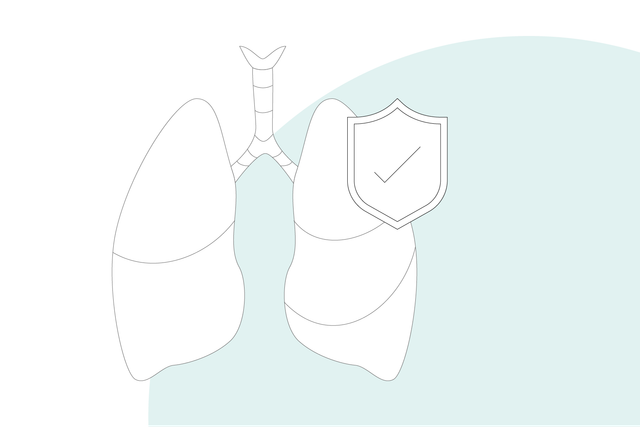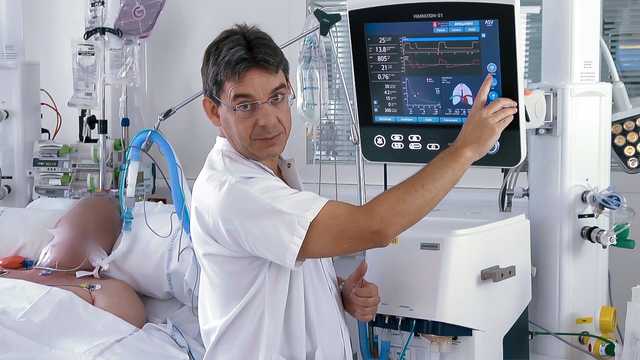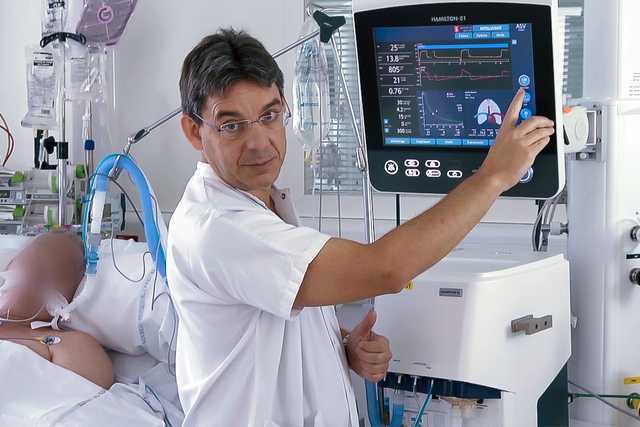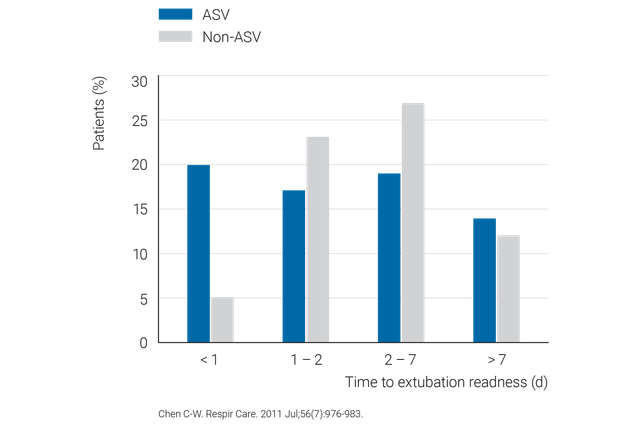
Die adaptive Druckunterstützung (Adaptive Support Ventilation, ASV) ist ein Beatmungsmodus, der Atemfrequenz, Tidalvolumen und Inspirationszeit je nach Lungenmechanik und Atemarbeit des Patienten auswählt und kontinuierlich anpasst.
Rund um die Uhr und mit jedem Atemzug, von der Intubation bis zur Extubation.

ASV verwendet automatisch Lungenschutzstrategien, um Komplikationen wie AutoPEEP und Volutrauma/Barotrauma zu vermindern (
Im Rahmen dieser Lungenschutzstrategien fördert ASV die spontane Atmung durch den Patienten (


In diesem Video zeigt der Oberarzt der Intensivmedizin Dr. Jean-Michel Arnal die wichtigsten Funktionen und Einstellungen für den Modus ASV an einem echten Patienten auf der Intensivstation.


ASV ist ein Standard-Beatmungsmodus bei allen unseren Intensivbeatmungsgeräten.